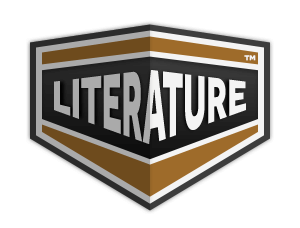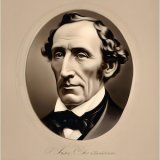Little Ida's Flowers Page #2
Little Ida's Flowers is a charming children's story written by Hans Christian Andersen. The book revolves around a young girl named Ida, who wonders why her flowers look tired and wilted. An enchanting tale unfolds when she learns from a student living with her family that flowers can speak, dance and engage in nighttime balls. As Ida falls asleep, she dreams of her flowers engaging in a grand ball. The next day, Ida takes the student's advice on how to revive their strength. This delightful story is filled with whimsy, imagination and beautiful elements of fairy-tale fantasy.
Genre: Children
Genre: Children
- 22 Views
Then she took them into the room where a number of toys lay on a pretty little table, and the whole of the table drawer besides was full of beautiful things. Her doll Sophy lay in the doll's bed asleep, and little Ida said to her, "You must really get up Sophy, and be content to lie in the drawer to-night; the poor flowers are ill, and they must lie in your bed, then perhaps they will get well again." So she took the doll out, who looked quite cross, and said not a single word, for she was angry at being turned out of her bed. Ida placed the flowers in the doll's bed, and drew the quilt over them. Then she told them to lie quite still and be good, while she made some tea for them, so that they might be quite well and able to get up the next morning. And she drew the curtains close round the little bed, so that the sun might not shine in their eyes. During the whole evening she could not help thinking of what the student had told her. And before she went to bed herself, she was obliged to peep behind the curtains into the garden where all her mother's beautiful flowers grew, hyacinths and tulips, and many others. Then she whispered to them quite softly, "I know you are going to a ball to-night." But the flowers appeared as if they did not understand, and not a leaf moved; still Ida felt quite sure she knew all about it. She lay awake a long time after she was in bed, thinking how pretty it must be to see all the beautiful flowers dancing in the king's garden. "I wonder if my flowers have really been there," she said to herself, and then she fell asleep. In the night she awoke; she had been dreaming of the flowers and of the student, as well as of the tiresome lawyer who found fault with him. It was quite still in Ida's bedroom; the night-lamp burnt on the table, and her father and mother were asleep. "I wonder if my flowers are still lying in Sophy's bed," she thought to herself; "how much I should like to know." She raised herself a little, and glanced at the door of the room where all her flowers and playthings lay; it was partly open, and as she listened, it seemed as if some one in the room was playing the piano, but softly and more prettily than she had ever before heard it. "Now all the flowers are certainly dancing in there," she thought, "oh how much I should like to see them," but she did not dare move for fear of disturbing her father and mother. "If they would only come in here," she thought; but they did not come, and the music continued to play so beautifully, and was so pretty, that she could resist no longer. She crept out of her little bed, went softly to the door and looked into the room. Oh what a splendid sight there was to be sure! There was no night-lamp burning, but the room appeared quite light, for the moon shone through the window upon the floor, and made it almost like day. All the hyacinths and tulips stood in two long rows down the room, not a single flower remained in the window,
Translation
Translate and read this book in other languages:
Select another language:
- - Select -
- 简体中文 (Chinese - Simplified)
- 繁體中文 (Chinese - Traditional)
- Español (Spanish)
- Esperanto (Esperanto)
- 日本語 (Japanese)
- Português (Portuguese)
- Deutsch (German)
- العربية (Arabic)
- Français (French)
- Русский (Russian)
- ಕನ್ನಡ (Kannada)
- 한국어 (Korean)
- עברית (Hebrew)
- Gaeilge (Irish)
- Українська (Ukrainian)
- اردو (Urdu)
- Magyar (Hungarian)
- मानक हिन्दी (Hindi)
- Indonesia (Indonesian)
- Italiano (Italian)
- தமிழ் (Tamil)
- Türkçe (Turkish)
- తెలుగు (Telugu)
- ภาษาไทย (Thai)
- Tiếng Việt (Vietnamese)
- Čeština (Czech)
- Polski (Polish)
- Bahasa Indonesia (Indonesian)
- Românește (Romanian)
- Nederlands (Dutch)
- Ελληνικά (Greek)
- Latinum (Latin)
- Svenska (Swedish)
- Dansk (Danish)
- Suomi (Finnish)
- فارسی (Persian)
- ייִדיש (Yiddish)
- հայերեն (Armenian)
- Norsk (Norwegian)
- English (English)
Citation
Use the citation below to add this book to your bibliography:
Style:MLAChicagoAPA
"Little Ida's Flowers Books." Literature.com. STANDS4 LLC, 2024. Web. 19 May 2024. <https://www.literature.com/book/little_ida%27s_flowers_2187>.




Discuss this Little Ida's Flowers book with the community:
Report Comment
We're doing our best to make sure our content is useful, accurate and safe.
If by any chance you spot an inappropriate comment while navigating through our website please use this form to let us know, and we'll take care of it shortly.
Attachment
You need to be logged in to favorite.
Log In